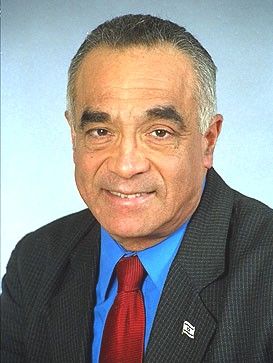One of the most pervasive myths appearing in the international media is the accusation that the outbreak of Palestinian violence against Israel known as the Second Intifada was caused by Ariel Sharon’s September 2000 visit to the Temple Mount.
The charge against Sharon is often brought up by those who wish to downplay or erase Palestinian responsibility for the horrific violence that followed. Sharon, a controversial figure, has served that purpose despite the evidence to the contrary.
The Second Intifada took place between 2000 and 2004, claiming the lives of 319 Israeli soldiers and 745 civilians, and left 2,430 soldiers and 5,032 civilians wounded. The violence was characterized by thousands of incidents of Palestinian terrorism involving firearms, explosives and a campaign of some 138 suicide bombings. The violence only subsided following the death of Yasser Arafat in November 2004.
Years later, we still see headlines commemorating the events of September 28, 2000 such as this from a 2015 piece in The Nation:

But the Palestinians themselves dispute the charge in their own words.
Palestinian Communications Minister Imad Al-Faluji, Al-Safir, 3 March 2001. (Translated by MEMRI):
Whoever thinks that the Intifada broke out because of the despised Sharon’s visit to the Al-Aqsa Mosque is wrong.. . . This Intifada was planned in advance, ever since President Arafat’s return from the Camp David negotiations, where he turned the table upside down on President Clinton.
Yasser Arafat’s wife Suha said the following (from Palestinian Media Watch):
On the personal level, I miss him very, very much. [Our daughter] Zahwa also misses him, you can’t imagine. She didn’t know him. She knows that Arafat sent us away before the [Israeli] invasion of Ramallah. He said: ‘You have to leave Palestine, because I want to carry out an Intifada, and I’m not prepared to shield myself behind my wife and little girl.’ Everyone said: ‘Suha abandoned him,’ but I didn’t abandon him. He ordered me to leave him because he had already decided to carry out an Intifada after the Oslo Accords and after the failure of Camp David [July 2000].
The Israel Project notes that American diplomat Dennis Ross recounts in his book The Missing Peace how the Israelis called Washington with proof that the Palestinians were “planning massive, violent demonstrations throughout the West Bank and the next morning, ostensibly a response to the Sharon visit.” Washington pressured Arafat to dampen the violence, but the Palestinian leader – again per Ross – “did not lift a finger to stop the demonstrations, which produced the second Intifada.”
In addition, the Mitchell Report submitted by the investigatory committee set up to look into the causes of the outbreak of violence concluded:
The Sharon visit did not cause the Al-Aqsa Intifada. But it was poorly timed and the provocative effect should have been foreseen; indeed it was foreseen by those who urged that the visit be prohibited.
See more quotes from senior Palestinians and media admitting responsibility for the Second Intifada at Palestinian Media Watch.

Ten years after the event, the Jerusalem Post interviewed Ra’anan Gissin, Sharon’s spokesperson at the time of his Temple Mount visit:
“It was a sensitive time during the High Holy Days and at the end of Ramadan,” Gissin said. “I told him the situation was tense in the West Bank and that [Palestinian general Tawfik] Tirawi’s people were planning to do something on the Temple Mount, whether the trigger would be Sharon or something else. Sharon knew he was playing into their hands, but he went in a clear-headed manner to prove that he wouldn’t compromise on Jerusalem and that Israel would stand up for its rights.”
The initiator of the wave of violence, Marwan Barghouti, later told the Al-Hayat newspaper that he had decided that Sharon’s visit would be the most appropriate moment for the outbreak of the intifada.
“The night prior to Sharon’s visit, I participated in a panel on a local television station and I seized the opportunity to call on the public to go to the Aksa Mosque in the morning, for it was not possible that Sharon would reach al-Haram al- Sharif [the Temple Mount area] just so, and walk away peacefully,” Barghouti said.
“I finished and went to al-Aksa in the morning. We tried to create clashes without success because of the differences of opinion that emerged with others in the Aksa compound at the time,” he continued.
“After Sharon left, I stayed for two hours with other people and discussed the manner of response and how it was possible to react in all the cities and not just Jerusalem.”
Ultimately, Sharon’s visit to the Temple Mount could be seen as deliberately provocative towards the Palestinians. It’s clear, however, from the testimonies of the Palestinian leadership itself that it was the excuse for rather than the cause of the Second Intifada, which had already been planned in advance.


